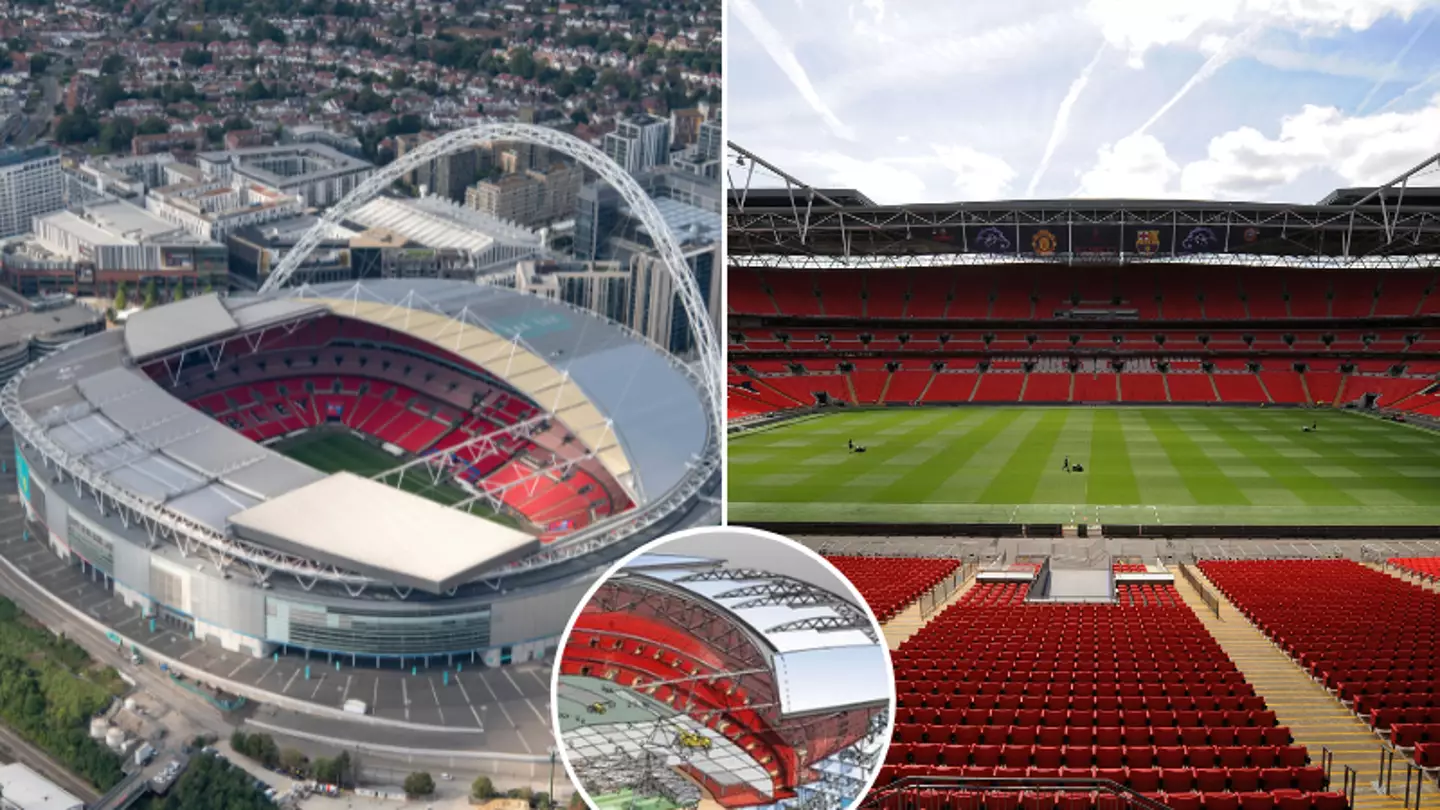
Wembley has an incredible hidden feature that has not been used since the stadium re-opened in 2007.
Wembley is one of the most iconic stadiums in the world, having played host to World Cup and Champions League finals, NFL games, huge boxing bouts and countless sell-out music concerts.
The stadium underwent a huge redevelopment just after the turn of the century, with England playing at the 'Old Wembley' for the final time in 2000 before the demolition process began in 2002.
Advert
The national stadium was out of action for five years, in which time England toured the country while cup finals were held at the Millennium Stadium in Cardiff.
The 'new' Wembley opened in 2007 with Chelsea's 1-0 victory against Manchester United in the FA Cup final.
The new stadium looks pretty different from its predecessor, with the famous Wembley twin towers replaced with the looming Wembley arch.
Advert
The arch was lifted into place in 2004 and at 133 metres high, it is the world’s largest single-span roof support.
17 years on from Wembley re-opening, another interesting feature of the stadium still hasn't been used.
One of the conditions of the £120 million lottery funding the stadium received was that it could be used for athletics.
With that in mind - and because there was a plan to use Wembley for athletics events at the 2012 London Olympics - track and field events were taken into account when constructing the arena.
Advert
.jpg)
The geometry of the stadium seating bowl is based on a track and field bowl in order to accommodate a running track when required.
The plan was that a platform would be put on top of the current field of play to convert the arena for athletics, although that would have temporarily reduced capacity from 90,000 to 60,000 during its use.
In the end the London Stadium was built in Stratford and Wembley was not used for athletics events at the 2012 Olympics.
Advert
While technically the stadium can still be converted for athletics, doing so would take weeks and cost millions of pounds.
Topics: Wembley Stadium, Athletics, Football